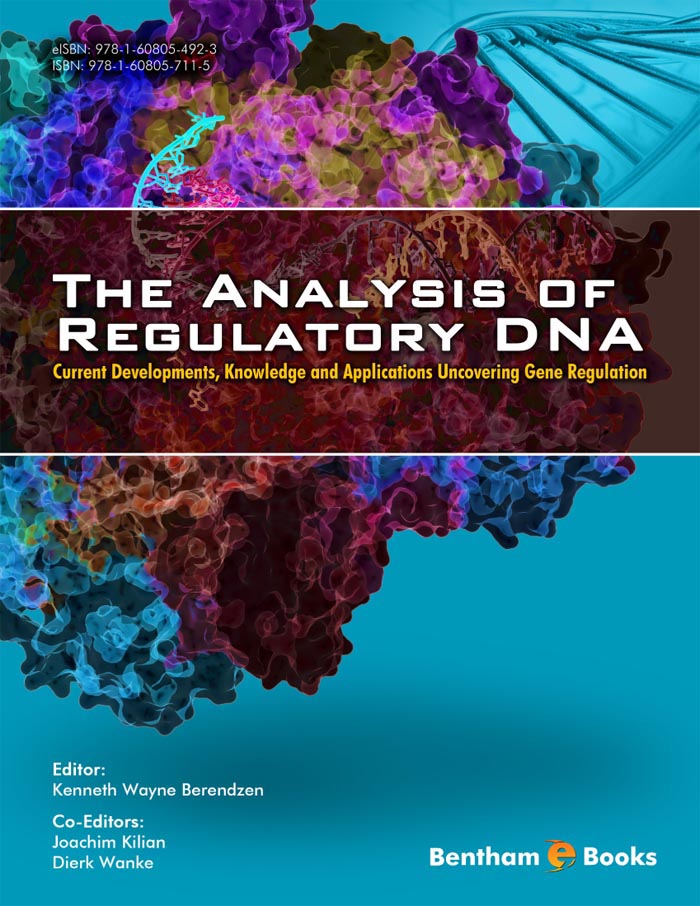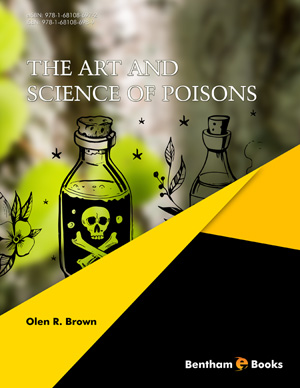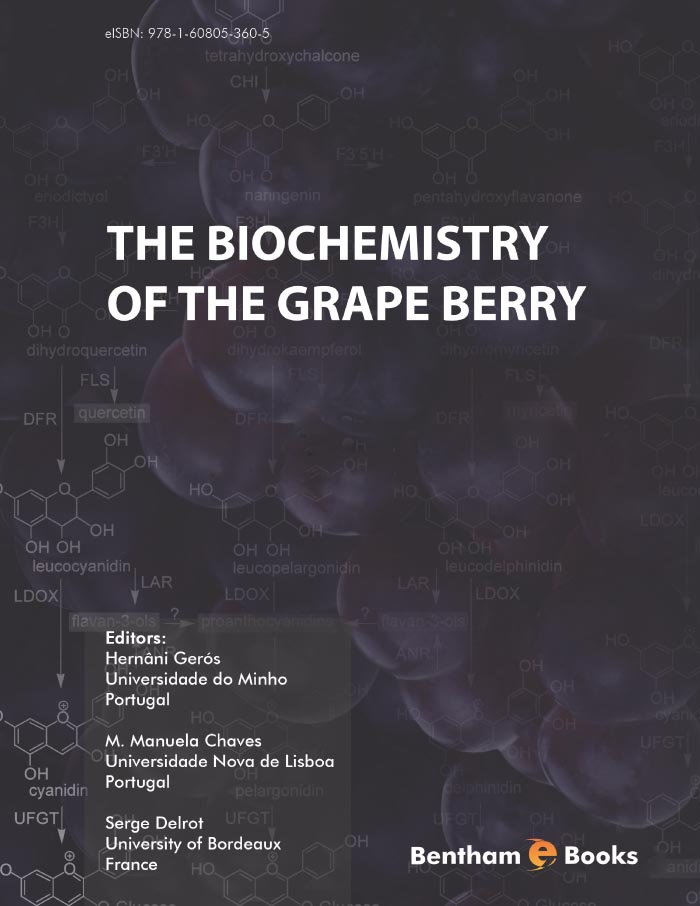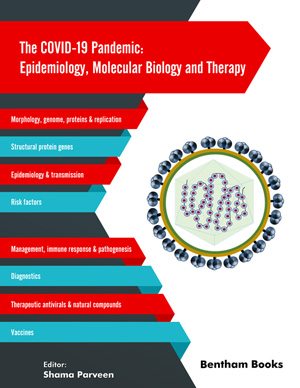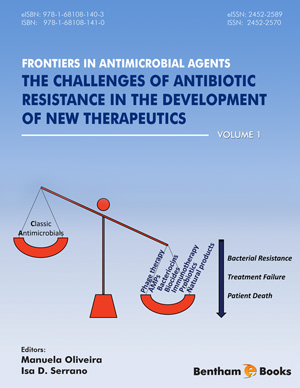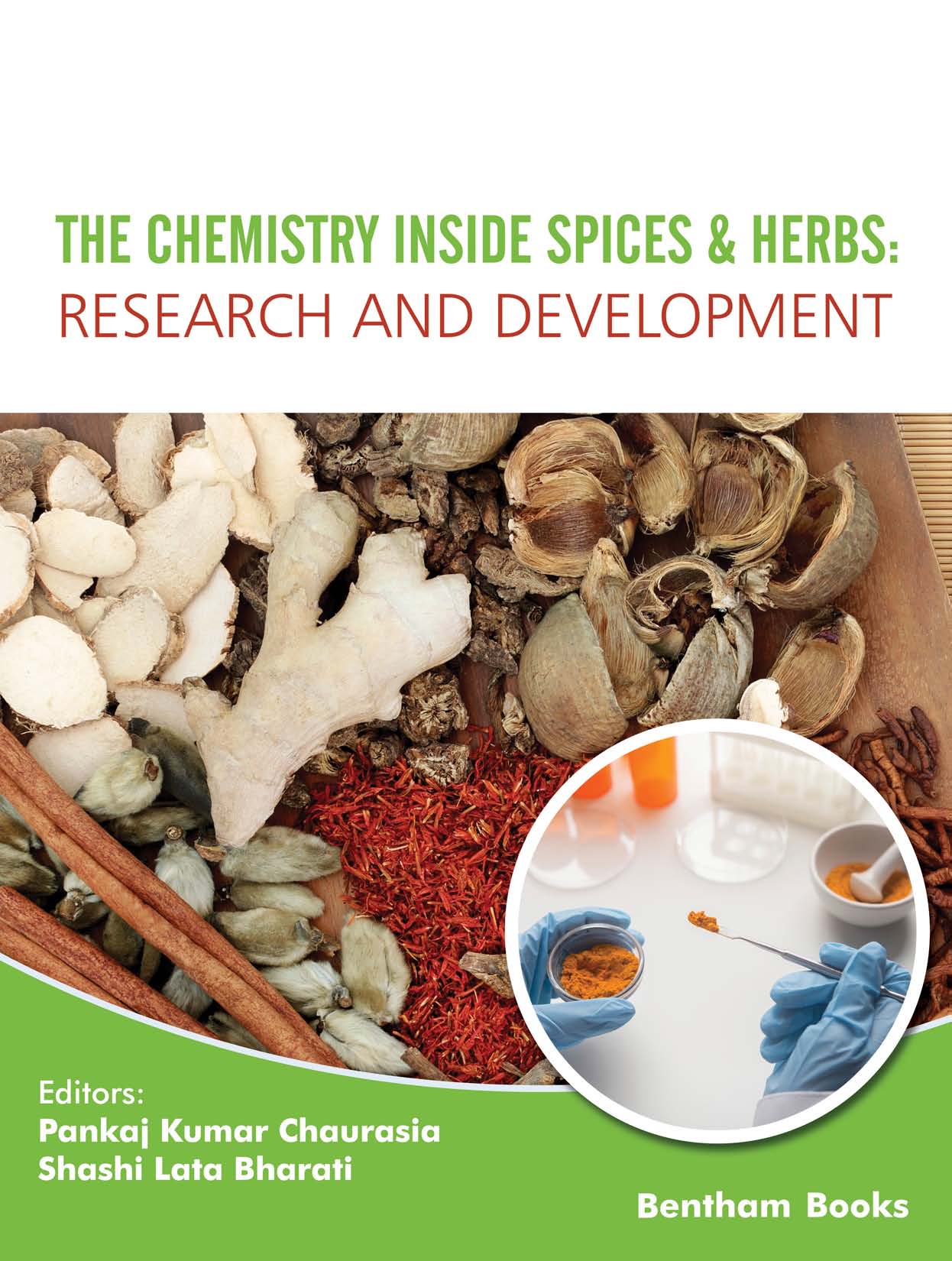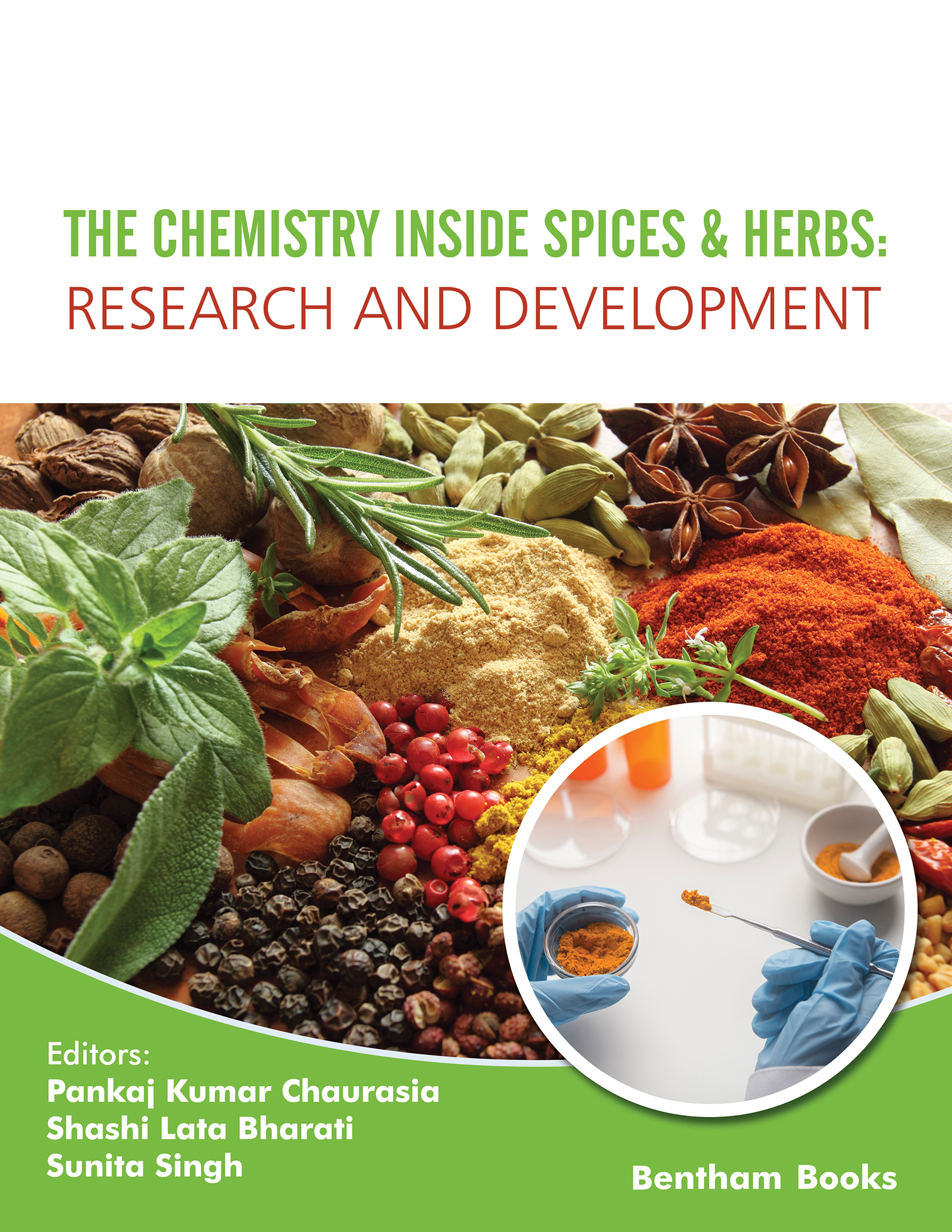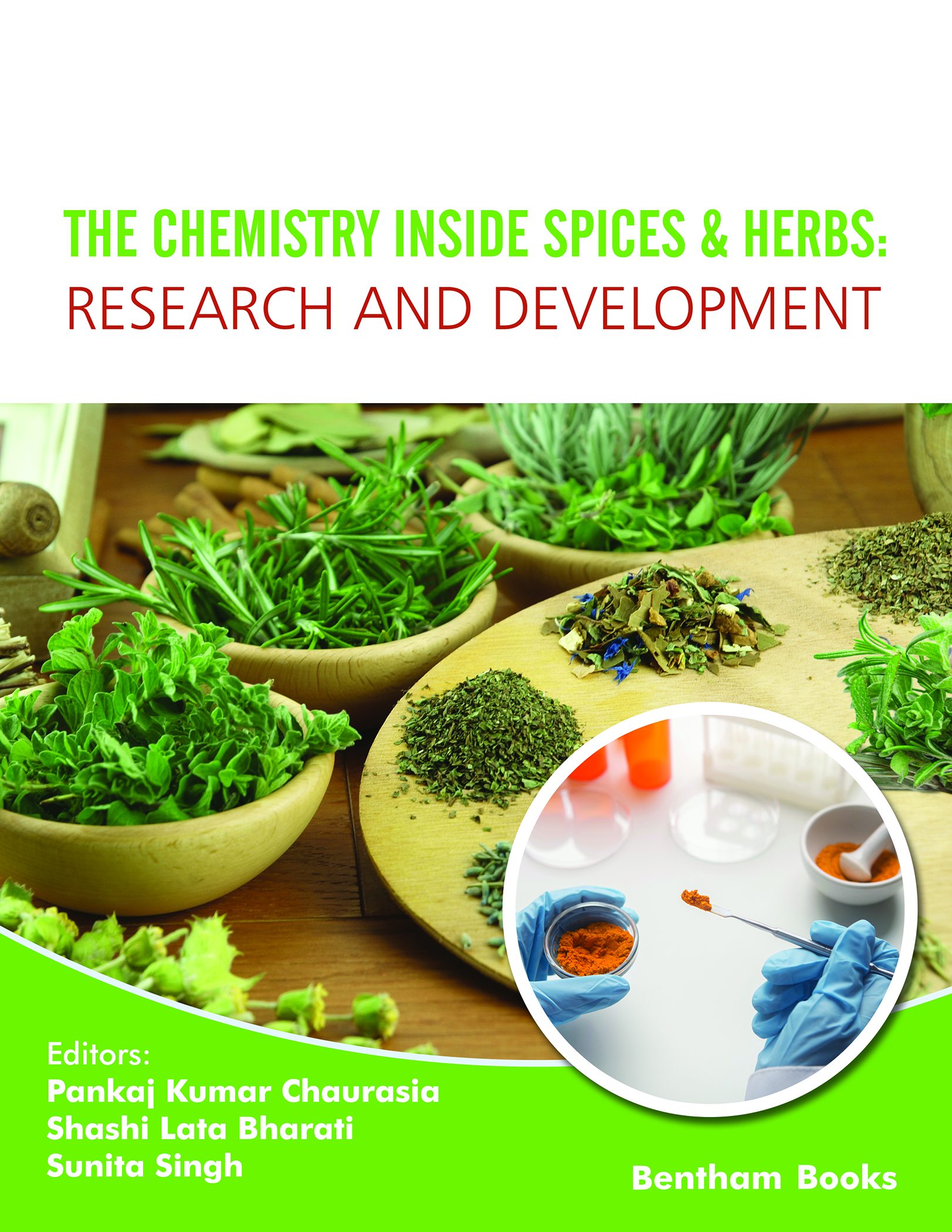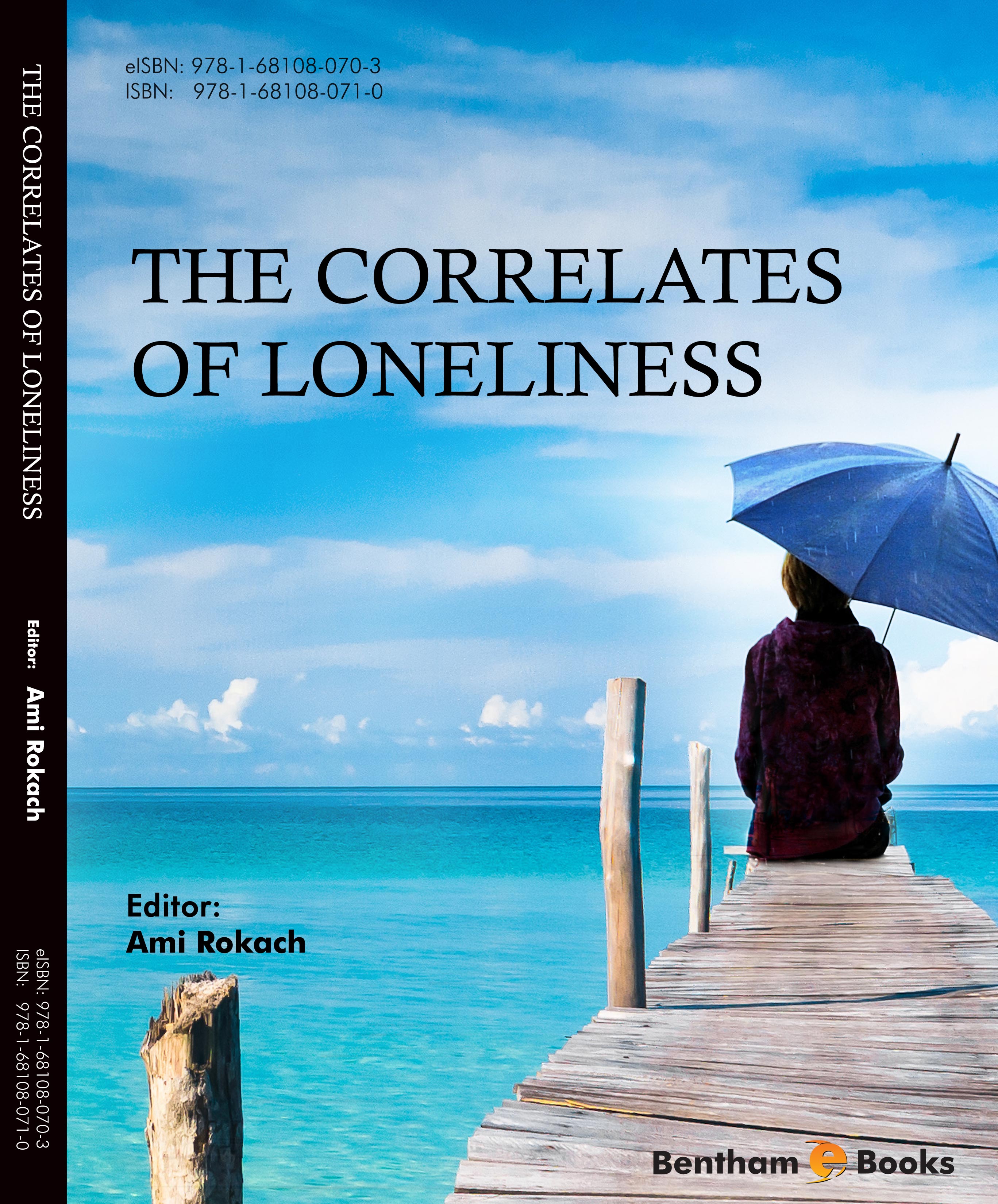Bentham Science Publishers
Bentham Science Publishers is a major publisher of more than 100 peer-reviewed science, technology and medical (STM) journals, along with a rapidly growing collection of eBooks. Since 1993, Bentham Science Publishers has been catering to the information needs of the pharmaceutical, engineering, biomedical and medical research community.1621 - 1640 of 1802 results
-
-
Text Analysis with Python: A Research-Oriented Guide
More LessText Analysis with Python: A Research-Oriented Guide is a quick and comprehensive reference on text mining using python code. The main objective of the book is to equip the reader with the knowledge to apply various machine learning and deep learning techniques to text data. The book is organized into eight chapters which present the topic in a structured and progressive way.
Key Features:
Introduces the reader to Python programming and data processing
Introduces the reader to the preliminaries of natural language processing (NLP)
Covers data analysis and visualization using predefined python libraries and datasets
Teaches how to write text mining programs in Python
Includes text classification and clustering techniques
Informs the reader about different types of neural networks for text analysis
Includes advanced analytical techniques such as fuzzy logic and deep learning techniques
Explains concepts in a simplified and structured way that is ideal for learners
Includes References for further reading
Text Analysis with Python: A Research-Oriented Guide is an ideal guide for students in data science and computer science courses, and for researchers and analysts who want to work on artificial intelligence projects that require the application of text mining and NLP techniques.
-
-
-
Textbook of Advanced Dermatology: Pearls for Academia and Skin Clinics (Part 1)
More LessTextbook of Advanced Dermatology: Pearls for Academia and Skin Clinics is an essential reference for practicing dermatologists in hospitals and clinics. The book aims to provide interesting tips that cannot be found in traditional dermatology handbooks. The contributors include top minds in dermatology and related fields such as Joe Niamtu, Samuel Lam, and Steven Feldman. Topics in the book include novel, original formulations for topical compounds, ways to improve patient adherence to prescriptions, business tips, novelties in skin surgery, and solutions for preventing patient complaints and legal suits. The book also highlights the author's personal experiences gained over many years in improving everyday clinical dermatology practice.
The book is divided into 5 sections each representing 'pearls' of advice: Teaching Pearls, Medical Pearls, Publication Pearls, Procedural Pearls, and Business Pearls, encompassing all of the broad realm of dermatology.
-
-
-
Textbook of Advanced Dermatology: Pearls for Academia and Skin Clinics (Part 2)
More LessTextbook of Advanced Dermatology: Pearls for Academia and Skin Clinics is an essential reference for practicing dermatologists in hospitals and clinics. The book aims to provide interesting tips which cannot be found in traditional dermatology handbooks. The contributors include top minds in dermatology and related fields such as Joe Niamtu, Samuel Lam, and Steven Feldman. Topics in the book include novel, original formulations for topical compounds, ways to improve patient adherence to prescriptions, business tips, novelties in skin surgery, and solutions for preventing patient complaints and legal suits. The book also highlights the authors personal experiences gained over many years in improving everyday clinical dermatology practice.
The book is divided into 5 sections each representing pearls of advice: Teaching Pearls, Medical Pearls, Publication Pearls, Procedural Pearls, and Business Pearls, encompassing all of the broad realm of dermatology.
-
-
-
The 2-Dimensional World of Graphene
More LessThe 2-Dimensional World of Graphene explores a wide range of graphene applications, capturing current research and understanding about the material while also offering a glimpse into the exciting possibilities that lie ahead. It compiles 10 edited reviews contributed by experts in chemistry.
The book begins with a comparison of short-chain dyad graphene oxide and graphene quantum dot nanocomposites, highlighting their role in renewable energy. The introductory chapter is followed by reviews on graphene applications forensics, water purification, green synthesis from agricultural waste, energy storage and conversion, reliability engineering and advanced material fabrication. Each chapter includes structured sections, detailed references and a summary for a broad readership. Contributors have included information on structures and relevant methodology where appropriate for the range of applications highlighted.
The 2-Dimensional World of Graphene is an essential primer on applications of graphene and its derivatives.
-
-
-
The Analysis of Regulatory DNA: Current Developments, Knowledge and Applications Uncovering Gene Regulation
More LessA major goal of integrative research is understanding regulatory networks to such an extent as to allow researchers to model developmental and stress responses. Regulatory networks of living systems include complex and vast interactions between proteins, metabolites, RNA, various signaling molecules and DNA. One aspect of systems biology is understanding the dynamics of protein-DNA interactions affecting gene expression that are caused by transcription factors (TFs) and chromatin remodeling factors. This e-book provides a resource for summarizing current knowledge eukaryotic transcription and explores cis-elements and methods for their analysis, prediction and discovery. The book also presents an overview of exploring gene regulatory networks, chromatin, and miRNAs. Information about state-of-the-art techniques for the determination of TF - cis-element interactions in vivo and in silico give cutting edge insights on how genomic-scale research is being approached. The Analysis of Regulatory DNA provides readers with both the necessary background knowledge and provocative, up-to-date insights aimed at sparking new and vibrant experimental designs for understanding and predicting cis-elements in the eukaryotic genome.
-
-
-
The Anatomical Foundations of Regional Anesthesia and Acute Pain Medicine Macroanatomy Microanatomy Sonoanatomy Functional anatomy
More LessAlthough the timeless quote of Alon Winnie (ASRA Founding Father), that regional anesthesia is simply an exercise in applied anatomy, rings true and will continue to ring true for many years to come, we now have a better understanding of the micro- and ultrastructure of the nerves and the anatomical features membranes, fascia, fascial planes, and barriers that surround them. With this understanding on an anatomical basis, anesthesiologists can now better appreciate the reasoning behind why pain blocks sometimes fail; or where the "sweet spot" of a nerve is and how to find it; or why epidural blocks are segmental while subarachnoid blocks are not; or why older patients are less prone to postdural puncture headache, and many more issues of regional anesthesia and pain medicine. The Anatomical Foundations of Regional Anesthesia and Acute Pain Medicine is a textbook which explains the sensory function of each nerve in the human body in detail, including the motor function. The textbook also features detailed information on nerve sonoanatomy.
This textbook is written and designed to convey practical working knowledge of the macro-, micro-, sono-, and functional anatomy required for regional anesthesia and acute pain medicine in an accessible manner through the use of detailed illustrations, (anatomical figures, diagrams and tables), with simplified legends and videos that allow readers to understand concepts such as percutaneuous nerve mapping and nerve blockade access in a dynamic manner. The extensive reference lists adequately complement the knowledge provided in the text. The book is essential for all medical graduates and training anesthesiologists seeking to understand the basics and detailed nuances of nerve anatomy and regional anesthesia.
-
-
-
The Architecture Heritage of Edirne
More LessEdirne is a vibrant city of historical importance where civilizations have concentrated throughout the ages, with a unique architectural heritage. Constructions like the Selimiye Mosque from Sinan, the Old Mosque from the fifteenth-century, Üç Şerefeli Mosque, Sultan Beyazid II Mosque, and its many complexes, imarets (public soup kitchens), Dar al-Shifa (medical centers), hans (public inns), baths, bridges, caravanserais, are refined examples of Ottoman-Islamic art.
The Architecture Heritage of Edirne is an exploration of the city's architectural Heritage. approaching the past with a historical perspective through works from all the periods it has endured. Starting with the history of Edirne, the book goes into the details of the historical neighborhood, the central district and the historical architecture in the present day city. The book includes notes on the architecture in each notable district and their respective monuments and sites. This is followed by coverage of the architecture of Edirne's former districts. The book concludes with the author's understanding of Edirne's social and economic fabric, both in the past and present. This chapter details the traditional customs, dances, clothing and economic structure of the city.
The book is a ley reference for scholars and enthusiasts of urban history, architectural heritage and design, fine arts, humanities and social sciences. The breadth of information covered in the book also makes it a resource for anyone interested in Turkish cultural heritage studies.
-
-
-
The Art and Science of Poisons
More LessPoisons, due to their lethal nature, invoke a sense of fear in humans. Yet, they have also impacted other aspects of human life. Poisons have been used by nomadic hunters to kill their prey, by scientists to explore complex biochemical mechanisms of the body, by physicians to lower cholesterol and to kill cancer cells, by farmers and the general public to destroy pests, by the evil minded for homicide, and by tyrants as weapons of war.
The Art and Science of Poisons presents two facets of poisons: the science behind them and their place in history and art. The science of poisons describes their biochemistry and how they kill. The science story voyages into the sub-microscopic world of atoms, molecules, and cells. Only there can we see the true miracles and mysteries of life and death. Chapters in the book explore poisons from snakes, spiders, scorpions, sea creatures, as well as poisons made by humans in the laboratory, and those which are derived from beautiful plants.
The art of poisons, on the other hand, encompasses everything else about these agents that conjures up the image of the skull and crossbones. This side of the story explores the legends and tales of intrigue and surreptitious deaths of well-known personalities such as Socrates, Cleopatra, Hitler, and many more.
General readers with a curiosity about science and an interest in history and human nature will enjoy both facets presented in this brief, yet varied exploration into the world of poisons.
-
-
-
The Art of Nanomaterials
More LessNanotechnology has revolutionized many fields and applications, such as medical diagnosis and treatment, water purification, and environmental protection. There is an art behind the synthesis of nanomaterials and their use in our daily lives. The Art of Nanomaterials takes the reader on a fascinating historical journey to learn how artistic inventiveness has influenced scientific innovation, from ancient Egyptian paintings to modern uses in healthcare and engineering.
Through 6 chapters, readers will be able to appreciate the history and significance of nanomaterials in modern technology, their role in medicine, environmental protection, and their relationship with water. It serves as a quick and simple reference for anyone who has a scientific background in natural sciences, or otherwise, who is interested in nanomaterials.
-
-
-
The Biochemistry of the Grape Berry
More LessGrapes (Vitis spp.) are economically significant fruit species. Many scientific advances have been achieved in understanding physiological, biochemical, and molecular aspects of grape berry maturation. Some of these advances have led to the improvement of wine quality through better grape growing practices; but this avenue of research is still wide open due to the complexity of the biochemical mechanisms involved in the development and ripening of grapes and their response to environment.
The Biochemistry of the Grape Berry is a pioneer offering for readers - giving a focused and integrated coverage of the key biochemical and molecular aspects of grape berry development and ripening. Readers will benefit from a comprehensive and updated coverage on key steps, mechanisms and regulation in grapevine biochemistry and molecular biology, provided by an international team of leading scientists. It provides useful references on this research area and original data from laboratories worldwide. The comprehensive range of topics covered in this e-book is valuable to a multidisciplinary readership including plant physiologists, enologists, microbiologists, wine makers, biochemists and students. Thus The Biochemistry of the Grape Berry represents a step forward in the comprehension of grape berry biochemistry, wine quality and health benefits.
-
-
-
The Brain: A Systems Neuroscience Perspective
More LessThe Brain: A Systems Neuroscience Perspective is a comprehensive textbook designed for undergraduate students in neuroscience. It offers a detailed exploration of brain dynamics, spatial navigation, and the neuroscience of Alzheimer's disease, with an emphasis on understanding complex concepts through simplified mathematical models. The objective is to provide a solid foundation for readers in systems neuroscience.
Key Topics
Fundamental Brain Dynamics: Covers the basics of brain organization, neural systems, and the role of differential equations in neuroscience (Chapters 1-3).
Spatial Navigation: Discusses the neural mechanisms underlying spatial navigation and the geometry of neural maps (Chapter 4).
Alzheimer’s Disease: Presents a simplified mathematical theory of Alzheimer’s dementia, exploring its onset, progression, and potential interventions (Chapter 5).
Key Features
Accessible Approach: Minimizes mathematical complexity to make the subject approachable for readers with a basic understanding of differential equations.
Standalone Resource: Provides all essential knowledge on brain function, making it a valuable tool for both coursework and self-study. Includes references for advanced readers.
-
-
-
The Buffalo (Bubalus bubalis) - Production and Research
More LessThis handbook aims at focusing on the husbandry of the common water buffalo, (Bubalis bubalis). The book covers a broad range of topics such as the buffalo’s genetic evolution, cytogenetics, subspecies, breed diversification, feeding and metabolic specificity, adaptable response to environmental stress factors, welfare, dairy requirements and production, reproduction and embryo technologies, cryopreservation, sperm cell sexing, somatic cell cloning and transgenesis.
Chapters presented and reviewed in this book have been by contributed by renowned scientists that have devoted years of research to the understanding of this species, and highlight the most recent advances in basic and applied science to unveil the understanding of physiological facets intrinsic to this animal species.
The depth of the selected topics makes this book especially suited for readers of all academic levels of study. Researchers, students and professionals will find this book a useful guide to breeding and farming the water buffalo.
-
-
-
The COVID-19 Pandemic: Epidemiology, Molecular Biology and Therapy
More LessThe Coronavirus Disease 2019 (COVID-19) pandemic has affected almost every part of the globe with millions of cases and over a million deaths. The pandemic has had a significant global economic impact and addressing it systematically requires significant efforts from researchers, healthcare workers and governments.
The COVID-19 Pandemic covers relevant aspects of this viral pandemic including information about the SARS-CoV-2 pathogen (morphology, genome, proteins, structural protein genes, replication), global epidemiology, transmission, risk factors, clinical manifestation, management, host immune response, pathogenesis, diagnosis and therapeutic agents (antivirals, natural compounds and vaccines). Readers will find basic and advanced knowledge about the disease organized into simple and easy-to-read chapters about the disease, making this book a handy and comprehensive reference for general readers, academics and biology students, alike.
-
-
-
The Challenging of Antibiotic Resistance in the Development of New Therapeutics
Frontiers in Antimicrobial Agents: Volume 1
More LessThe addition of only two novel classes of antibiotics to fight drug resistant microorganisms in the clinic over the past three decades means that the quest for new molecules that are effective against the threat of drug resistance is now a significant issue in modern medicine. Researchers have begun to experiment on alternative therapies to combat this threat.
Novel chemical agents are considered to be drugs of choice for tomorrow's clinical practice owing to their low probability to generate resistance. The first volume of Frontiers in Antimicrobial Agents describes innovative alternatives to the classical antimicrobial therapeutics, such as phage therapy, AMPs, probiotics, novel biocides, natural products and immunotherapy. Cutting-edge research is brought to the forefront, shedding light on the developments taking place to meet the challenge of drug resistant microorganisms. The volume also features information on antimicrobial approaches in veterinary medicine.
The book is a useful reference for researchers, microbiologists and healthcare professionals interested in updates on antibiotic resistance and alternatives to classical antibiotic therapy.
-
-
-
The Chemistry inside Spices & Herbs: Research and Development: Volume 1
More LessThe Chemistry inside Spices & Herbs: Research and Development brings comprehensive information about the chemistry of spices and herbs with a focus on recent research in this field. The book is an extensive 2-part collection of 20 chapters contributed by experts in phytochemistry with the aim to give the reader deep knowledge about phytochemical constituents in herbal plants and their benefits. The contents include reviews on the biochemistry and biotechnology of spices and herbs, herbal medicines, biologically active compounds and their role in therapeutics among other topics. Chapters which highlight natural drugs and their role in different diseases and special plants of clinical significance are also included.
Part I focuses on the general aspects of spice biotechnology, structure activity relationships and the natural products that can be used to treat different diseases - such as neurological diseases, inflammation, pain and infections. This part also covers information about phenolic compounds, flavonoids and turmeric supplements.
This book is an ideal resource for scholars (in life sciences, phytomedicine and natural product chemistry) and general readers who want to understand the importance of herbs, spices and traditional medicine in pharmaceutical and clinical research.
-
-
-
The Chemistry inside Spices & Herbs: Research and Development: Volume 2
More LessThe Chemistry inside Spices and Herbs: Research and Development brings comprehensive information about the chemistry of spices and herbs with a focus on recent research in this field. The book is an extensive 2-part collection of 20 chapters contributed by experts in phytochemistry with the aim to give the reader deep knowledge about phytochemical constituents in herbal plants and their benefits. The contents include reviews on the biochemistry and biotechnology of spices and herbs, herbal medicines, biologically active compounds and their role in therapeutics among other topics. Chapters which highlight natural drugs and their role in different diseases and special plants of clinical significance are also included.
Part II continues from the previous part with chapters on the treatment of skin diseases and oral problems. This part focuses on clinically important herbs such as turmeric, fenugreek, ashwagandha (Indian winter cherry), basil, Terminalia chebula (black myrobalan). In terms of phytochemicals, this part presents chapters that cover resveratrol, piperine and circumin.
-
-
-
The Chemistry inside Spices & Herbs: Research and Development: Volume 3
More LessThe Chemistry inside Spices & Herbs: Research and Development brings comprehensive information about the chemistry of spices and herbs with a focus on recent research in this field.
Experts in phytochemistry have contributed reviews with the aim to give the reader deep knowledge about phytochemical constituents in herbal plants and their benefits. The contents include reviews on the biochemistry and biotechnology of spices and herbs, herbal medicines, biologically active compounds and their role in therapeutics among other topics. Chapters which highlight natural drugs and their role in different diseases and special plants of clinical significance are also included.
Volume 3 covers several topics: the treatment of Polycystic Ovary Syndrome (PCOS), managing rheumatoid arthritis and related inflammatory conditions, orchid-derived natural flavoring and therapeutic agent Vanillin, Silymarin's utility in treating hepatic diseases, phytochemistry and pharmacological activities of Hygrophila spinosa, pharmacological and chemical aspects of Tulsi, Combretum caffrum as a potential anticancer molecule, and the roles of herbs in treating diabetes.
This book is an ideal resource for scholars (in life sciences, phytomedicine and natural product chemistry) and general readers who want to understand the importance of herbs, spices and traditional medicine in pharmaceutical R&D and clinical research.
-
-
-
The Chemistry inside Spices & Herbs: Research and Development: Volume 4
More LessThe Chemistry inside Spices & Herbs: Research and Development brings comprehensive information about the chemistry of spices and herbs with a focus on recent research in this field.
Experts in phytochemistry have contributed chapters with the aim to give the reader deep knowledge about phytochemical constituents in herbal plants and their benefits. These in-depth reviews cover the biochemistry and biotechnology of spices and herbs, herbal medicines, biologically active compounds and their role in therapeutics among other topics. Chapters which highlight natural drugs and their role in different diseases and special plants of clinical significance are also included.
Volume 4 covers these topics: the potential use of Indian spices in managing viral infections, the chemical, functional, and nutritional properties of Coriander, traditional uses, chemical components, and pharmacological properties of Sphaeranthus indicus, Copaiba oleoresins phytochemisty and the pharmacological properties of oils from Copaifera species. Additionally, the pharmacognostic profile of Nardostachys jatamansi is discussed, along with insights into the medicinal herb Bush Onion (Afrostyrax lepidophyllus) and its nutritional and medicinal values. Various aspects of plant essential oils, including their chemistry, extraction methods, and medicinal properties, and plant proteases are also covered in detail.
This book is an ideal resource for scholars (in life sciences, phytomedicine and natural product chemistry) and general readers who want to understand the importance of herbs, spices and traditional medicine in pharmaceutical R & D and clinical research.
-
-
-
The Chinese Journal of Artificial Intelligence
More LessThe Chinese Journal of Artificial Intelligence is an international journal promoting a comprehensive view of the field of artificial intelligence development to solve real-life problems. Artificial intelligence (AI) is a new technical science that studies and develops theory, methods and application systems used to simulate and extend human intelligence. The research in this field includes computational intelligence, language recognition, image recognition, natural language processing, fuzzy systems and expert systems. The rapidly published science journal focuses on the development of artificial intelligence methods in the world. Submitted papers should report some new aspects of the field of AI and also are validated using some public data sets for easy replicability of the research results. Contributions from China and abroad are welcomed.
Focal points of the journal include, but are not limited to these aspects:
AI applications in medicine, law, and other disciplines
Algorithms in artificial intelligence
Artificial intelligence and philosophy
Automated reasoning and inference
Automatic control and robotics
Bioinformatics
Case-based reasoning
Cognitive aspects of AI
Common-sense reasoning
Computing and the mind
Constraint processing
Heuristic search
High-level computer vision
Intelligent interfaces
Intelligent robotics
Machine learning
Multiagent systems
Natural computing
Natural language processing
Pervasive computing and ambient intelligence
Planning and theories of action
Reasoning under uncertainty or imprecision
-
-
-
The Correlates of Loneliness
More LessLoneliness has been described by modern psychologists as a 21st century epidemic, as it has been the subject of numerous news headlines in many regions. While many elderly people are affected by loneliness, the phenomenon has been increasingly observed by sociologists in younger individuals as well, including adolescents and university students. The correlates of loneliness is a collection of articles written by leading experts in the fields of psychology, sociology, social work and education, which examine how loneliness affects the various aspects of human lives, such as mental health, relationships, growing up, educational experiences, and the ability to be and remain an integral part of society.
The book explains the concept of loneliness in psychological theory and presents a few studies on loneliness among different populations (including a case study on Finnish people).
Written in a clear and systematic manner, The correlates of loneliness is the definitive beginners reference on the topic of loneliness for academicians, sociologists, psychiatrists and general readers.
-





